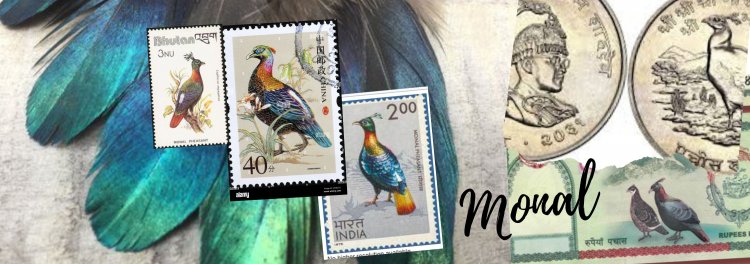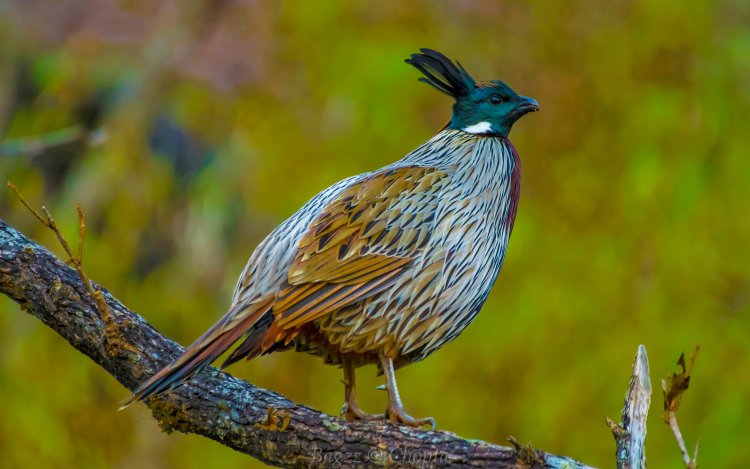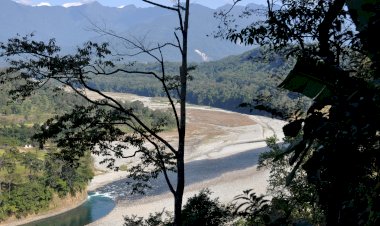beauty has no gender. At the end of the day, beauty is beauty.
Carmen Carrera
The state of Uttarakhand is interspersed with gorgeous high-altitude habitats ranging from snowy Himalayan mountain ranges to lush forests, grasslands, and Shivalik ranges. Out of 17 species found in The mountainous state is home to over ten species from the Phasianidae family. During my travails in remote valleys, I was fortunate to see these pheasants from close quarters.
The gleaming Himalayan monal dwells amid rocky boulders, grasses growing on steep mountainsides, and rhododendron forests. When seen at a distance on snowy patches, it looks like the colors of a rainbow The koklass pheasant, another high-altitude dweller, pecks around pine and mixed forests between 3,000 and 4,000 m, coming down to 1,600 m in the winter. And, finally, the kalij (or kaleej), which occupies high altitude forests of rhododendron, spruce, and sal, but is also found in the terai and bhabar regions at lower altitudes. It is the national bird of Nepal. Each of these fascinating pheasants has a different status and an interesting lifestyle.
The IUCN Red List Categories and Criteria are intended to be an easily and widely understood system for classifying species at high risk of global extinction. It divides species into nine categories
Not Evaluated, Data Deficient, Least Concern
Near Threatened, Vulnerable, Endangered, Critically Endangered
Extinct in the Wild, and Extinct.
Pheasants such as Himalayan Monal, Kolass Pheasant, and Khalij Pheasant are categorized under Status
LEAST CONCERN
Himalayan Monal
STATUS - Least Concern
( A least-concern species is a species that has been categorized by the International Union for Conservation of Nature (IUCN) as evaluated as not being a focus of species conservation because the specific species is still plentiful in the wild )
The Himalayan monal (Lophophorus impejanus) is a colorful bird found in the high-altitude regions and shrublands of the Himalayas. It is referred to as a bird of paradise. The species is diversely found in Afghanistan, Pakistan, India, Nepal, Bhutan, and China. The male and female monal are on opposite ends of a flamboyance scale. The sound of the Himalayan monal pheasant is so pleasing to hear.
Decked out in all the colors of the VIBGYOR in a rainbow, the male is the image of iridescence; green crested head, red neck, green shoulders, blue back, orange tail, and black underparts. When displaying or flushed, flashes a bright white patch on the back.
During the courtship, the metallic green crest and fiery copper tail come out in full display, the erect crest wiggles like a shiny crown of feathers, and the tail fans out and moves rhythmically to impress a potential mate The female is nowhere near as brightly colored, with a pale blue eye patch, white throat, and a streaky brown body.
The pale color helps in camouflaging her against the forest floor — particularly useful when she is incubating her eggs. Found in Himalayan hill forests, typically in areas with extensive rhododendrons and bamboo forests.
Indian Post and Telegraphs released a stamp to commemorate the Himalayan Monal as the state bird of Uttarakhand.
Monal is also the National Bird of Nepal and is called Danphe or Danpe.To commemorate the image of the bird is printed on Nepali Currency Note and Coin.
Koklass Pheasant
STATUS - Least Concern
The koklass pheasant (Pucrasia macrolopha) typically occurs in a wide geographic range from the western Himalayas to parts of Central Asia. A species of gamebird. In Uttarakhand, the prevalent species found in koklass subspecies is P. macrolopha macrolopha. This medium-sized pheasant also exhibits sexual dimorphism. Males are larger and more vibrant with a reddish-chestnut neck, and feathery streaks of black-and-white generously covering the rest of their body. Their most fascinating feature is a conspicuously dark and shiny head with a prominent crest of black feathers that make it look like the lead vocalist of an early 90s rock band.
Overall, these birds, at first sight, look like they have the head of a raptor, the black baza (Aviceda leuphotes), and the body of a turkey comparatively. They are one of the few members of the Galliformes order that can fly nonstop for several kilometers in terms of danger. They are one of the few gamebirds that regularly fly uphill and are capable of sustained flights of many miles.
Koklass are largely vegetarian for much of the year consuming pine nuts, pine shoots, bamboo shoots, and seeds. They are highly insectivorous during the warmer months which coincides with the nesting period and chick-rearing. They are monogamous with a slight tendency toward social polyandry. Both parents rear the chicks. During this phase of their life cycle, they live almost exclusively on ants. A close observation says that they consume catkins, pollen, and fruits
Kalij pheasant
STATUS - Least Concern

Khalij Pheasant ( Lophura leucomelanos ) is the most widely distributed species in the Himalayan foothills The Kalij Pheasant occupies two adjoining regions: (1) the southern slopes and valleys of the Himalayas from northern Pakistan east to northern Myanmar and southern China; and (2) most of Myanmar plus adjacent areas of India, Bangladesh, China, and Thailand.
An introduced population of the western race is well established on Hawaii’s Big Island and more tenuously on Oahu. There are nine subspecies of kalij pheasants known worldwide. Uttarakhand is home to one of these subspecies, the white-crested kalij pheasant (Lophura leucomelanos hamiltoni). The males of this species are easily distinguished by the wiry white crest that flows from their heads. Males are an ultra-stylish mix of a deep shimmering blue and silver. The iridescent blue on their bodies almost appears black in low light. Males puff up their chest feathers and flap half-open wings to attract a female. (2) Females are covered with beautiful, mottled patterns created from a spectrum of browns. Both males and females have a distinct patch of red around the eyes. They normally do a whittling chuckle, mainly in the morning and in the evening.
Living in diverse habitats, their diets cover everything from roots and tubers to termites, small snakes, bamboo seeds, small snakes, termites, figs, forest yams, acorns, ripe fruits, and other plant matter.
Do you know?
On 21 October 2021, the Government of Jammu and Kashmir declared Kalij Pheasant as the bird of the Union Territory of Jammu and Kashmir
Photo courtesy- Arjun Haarith - Poster / Bhagavathi - 3 Pheasants

















